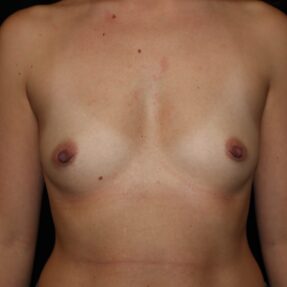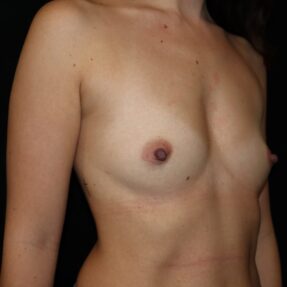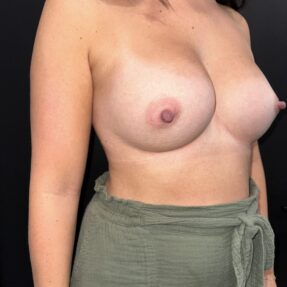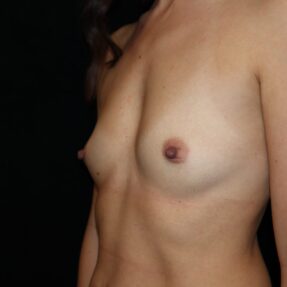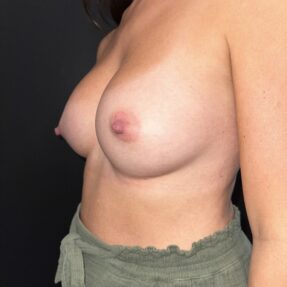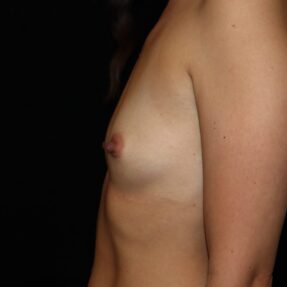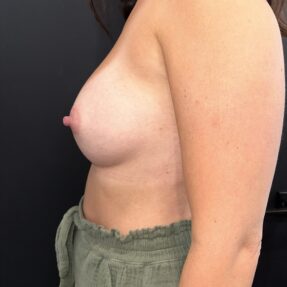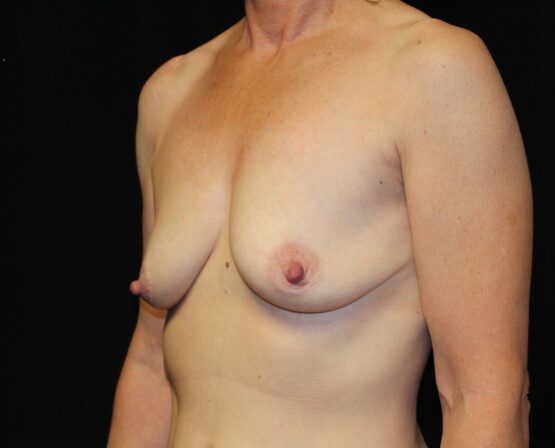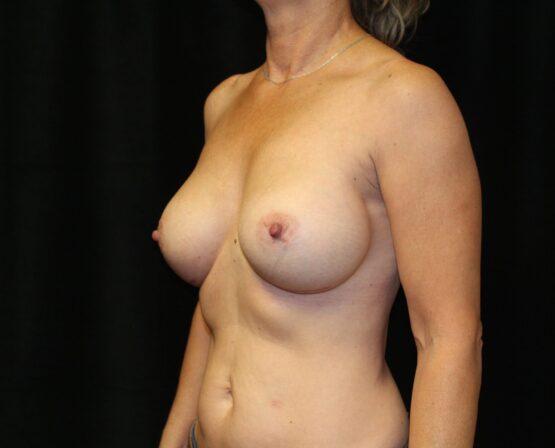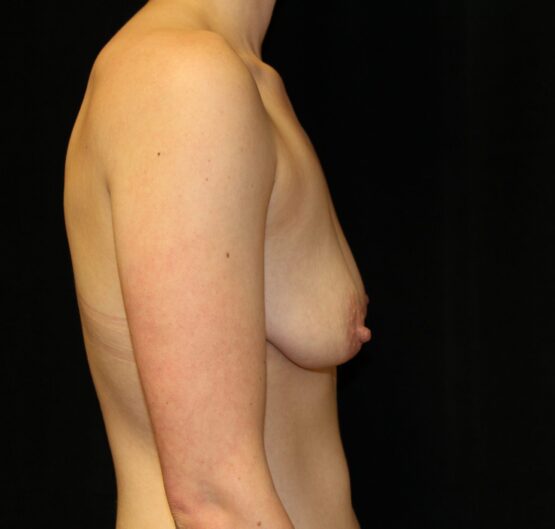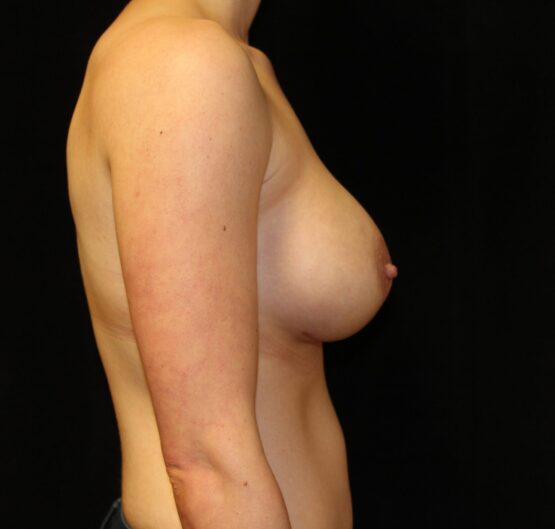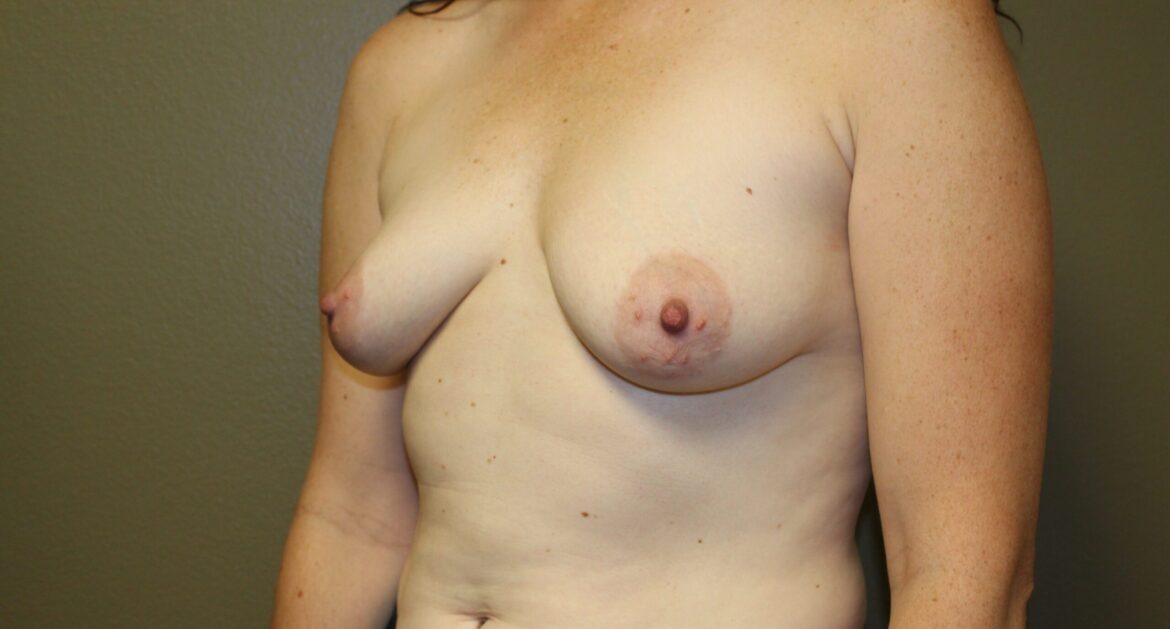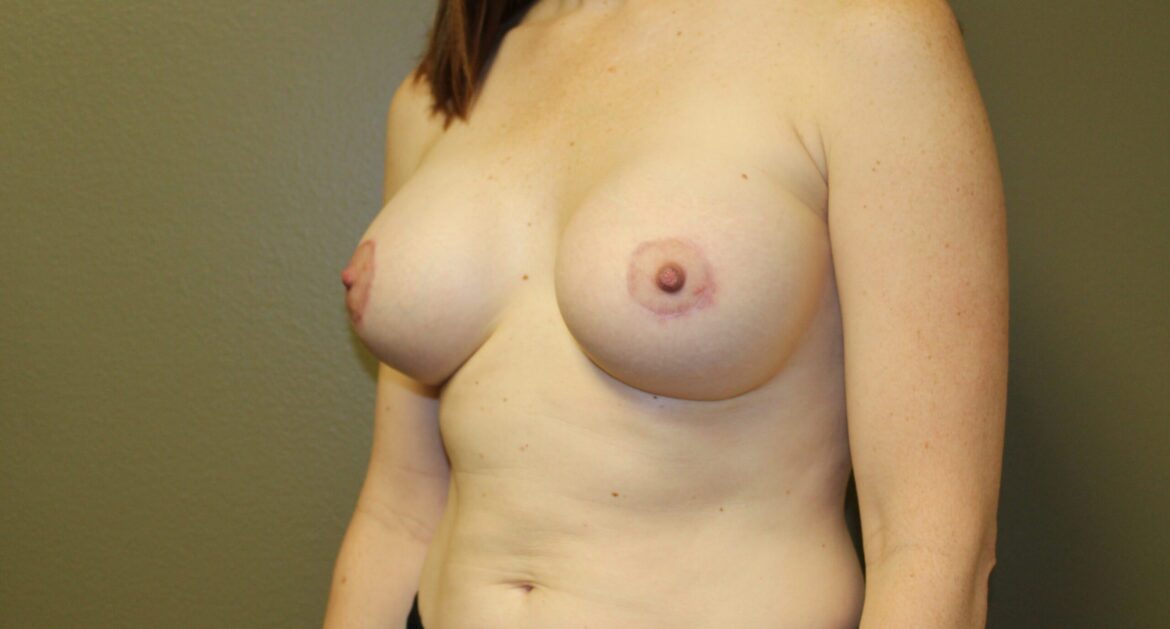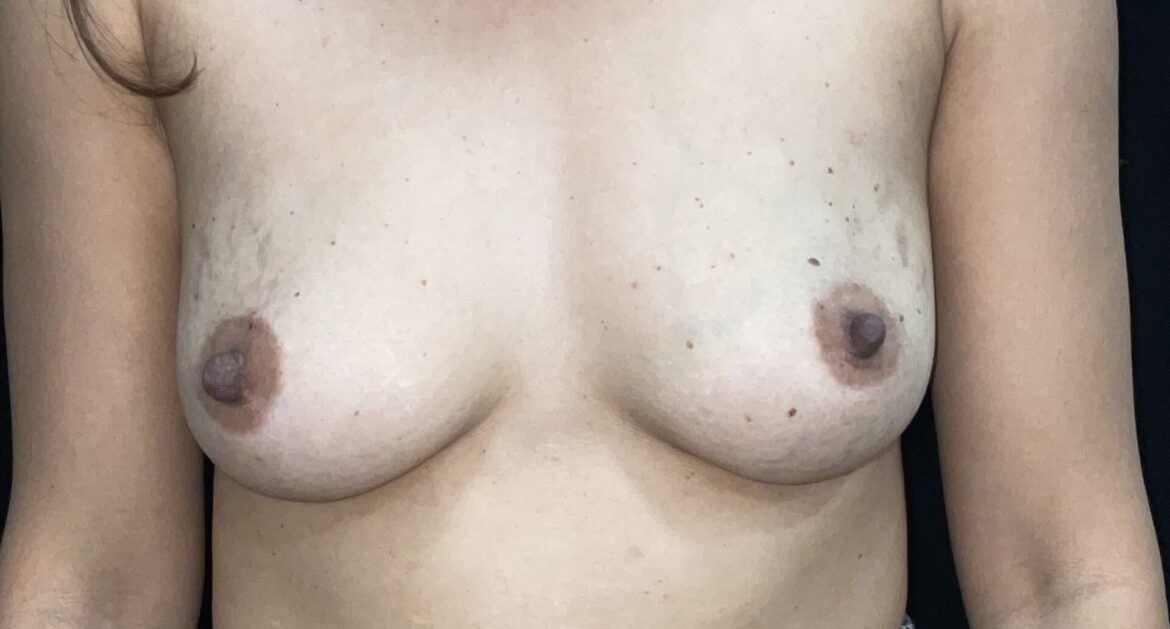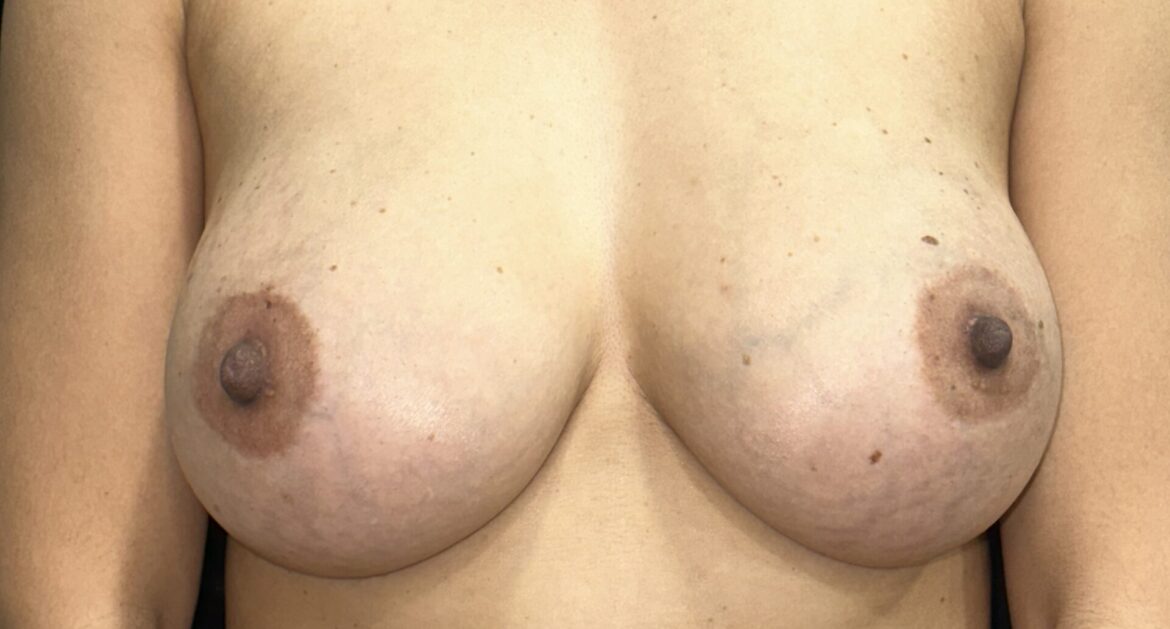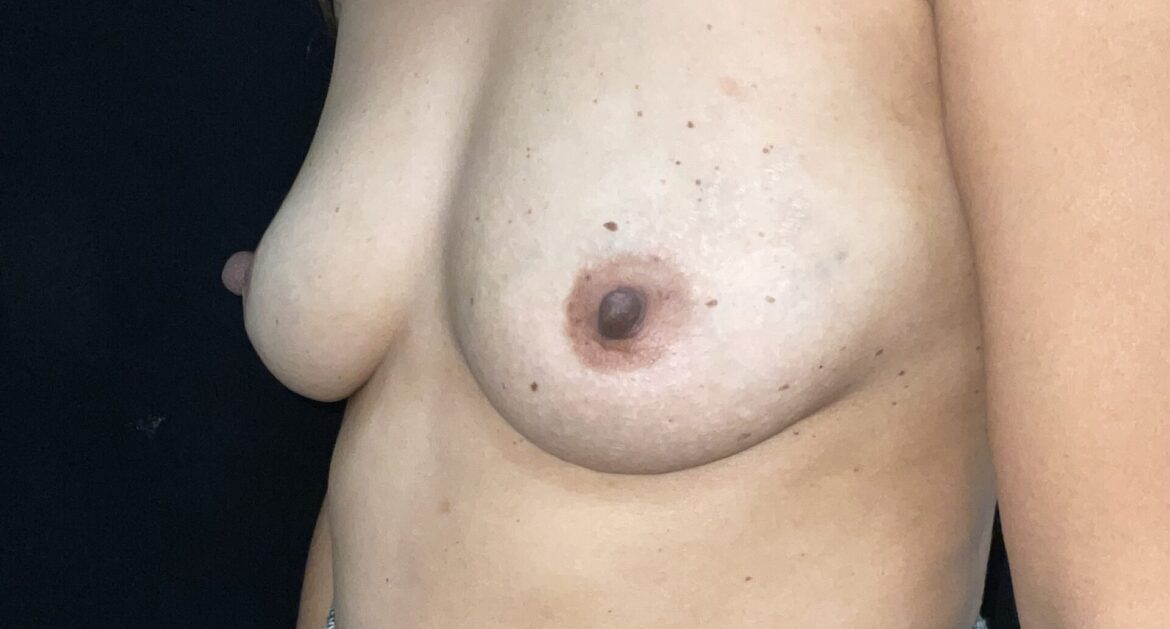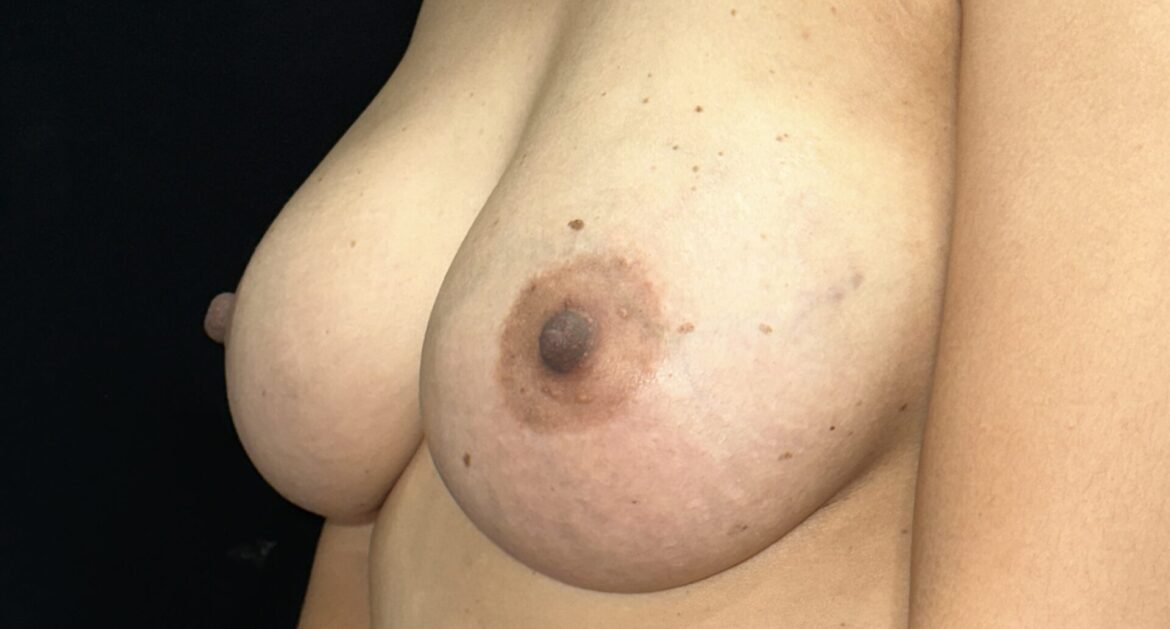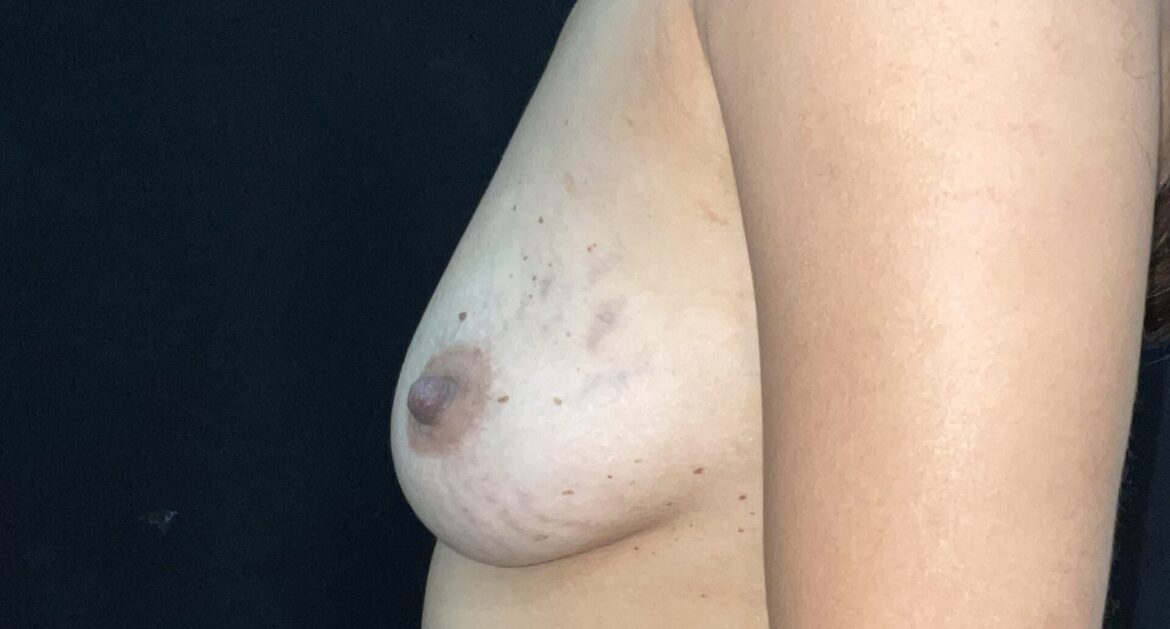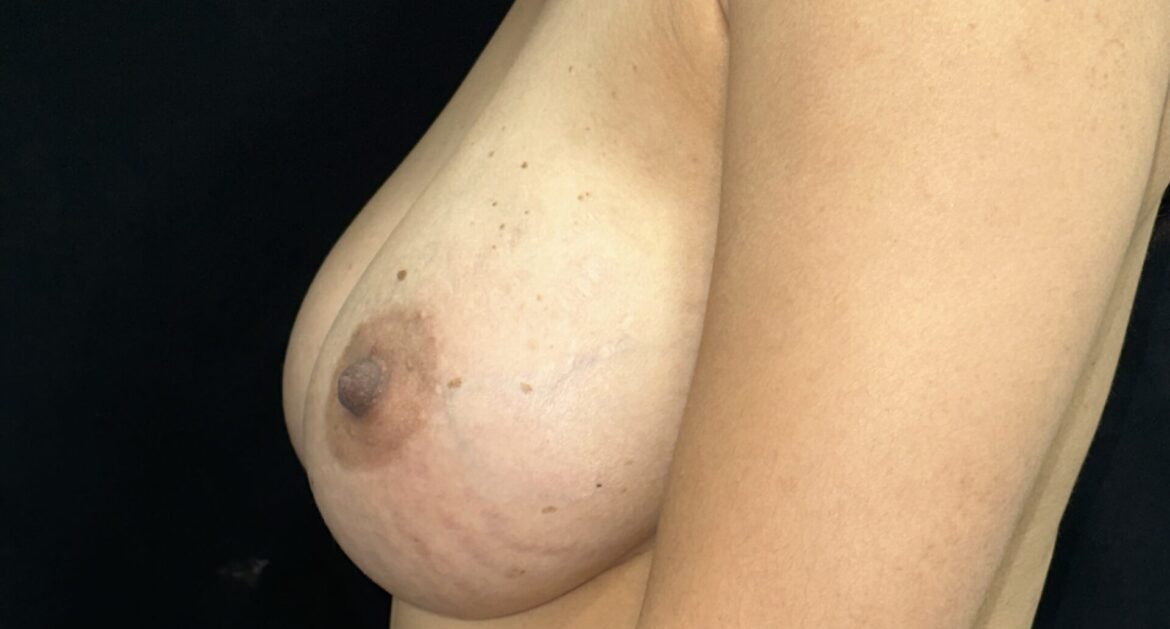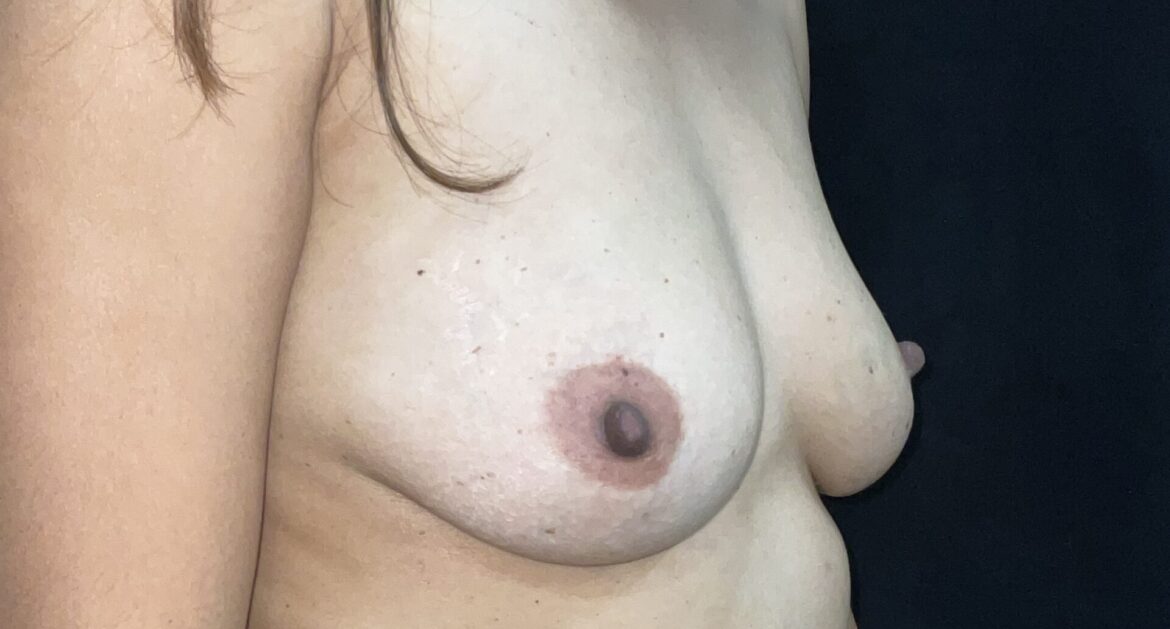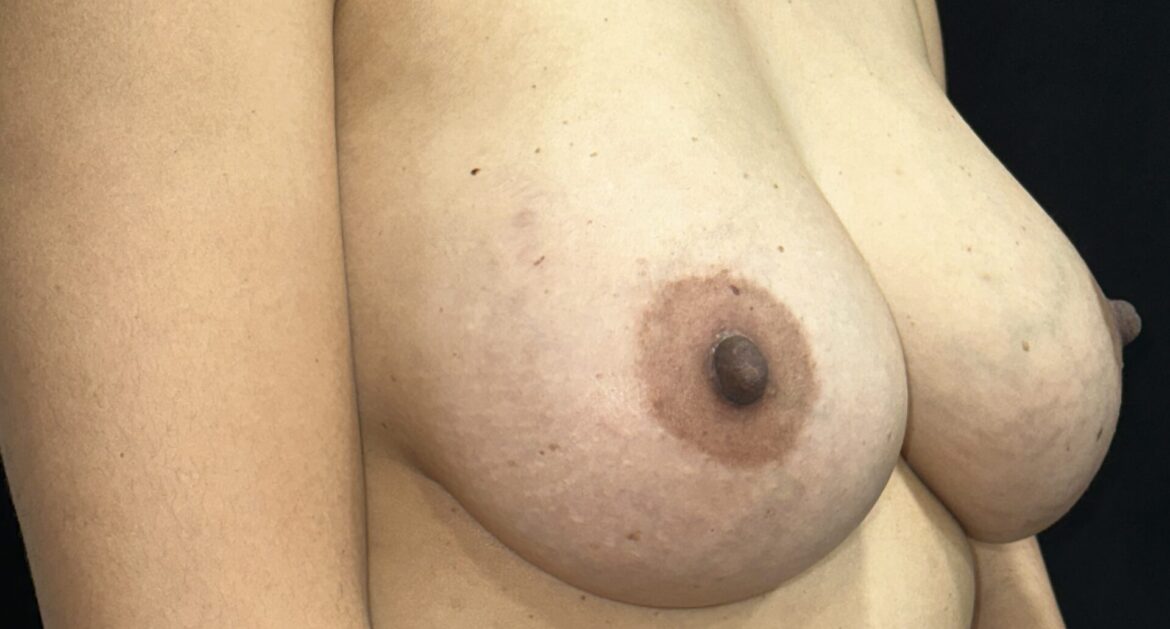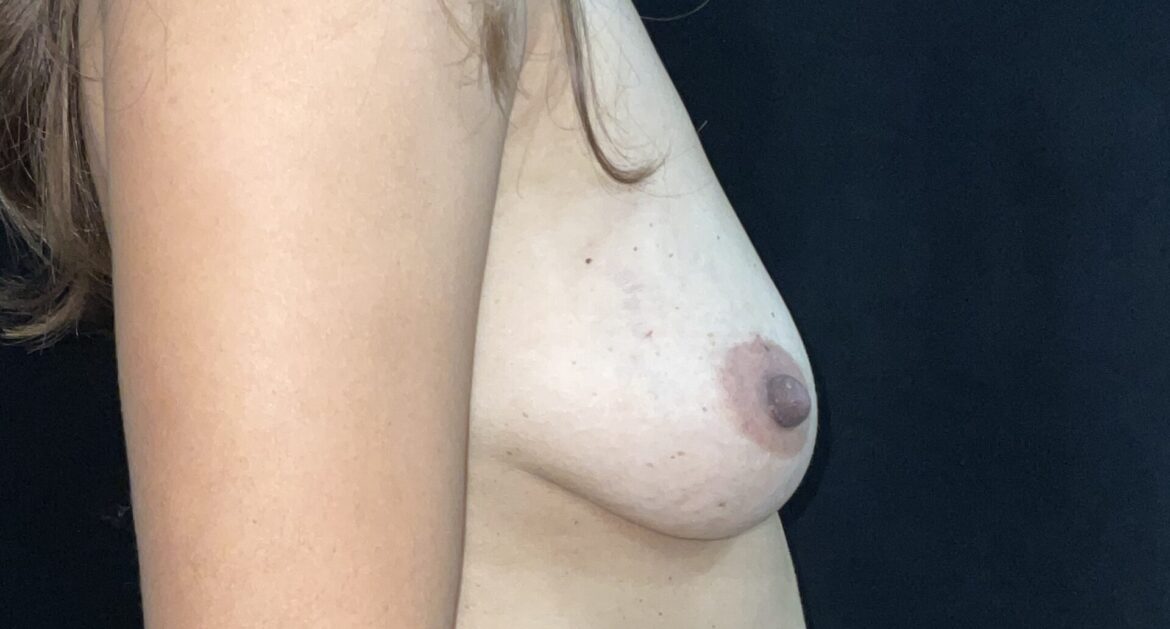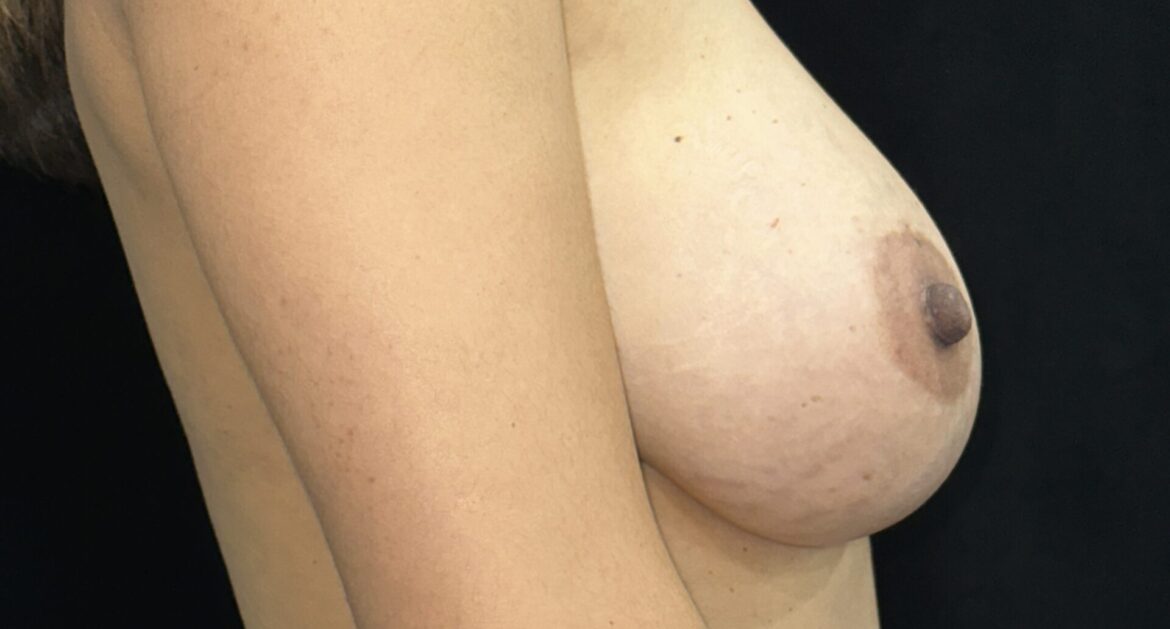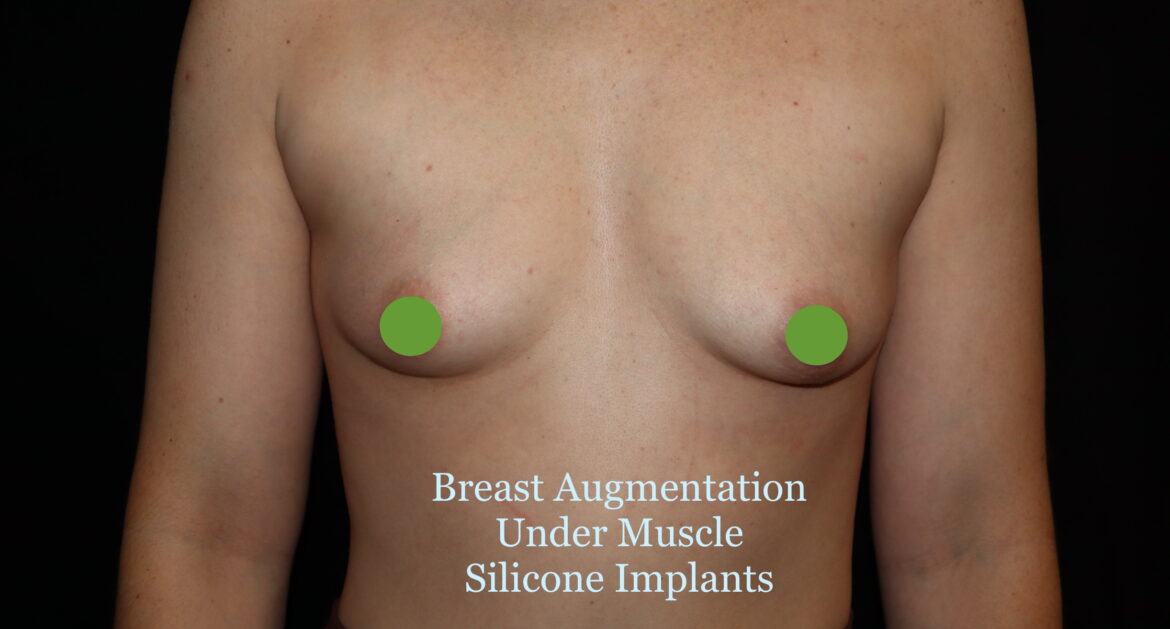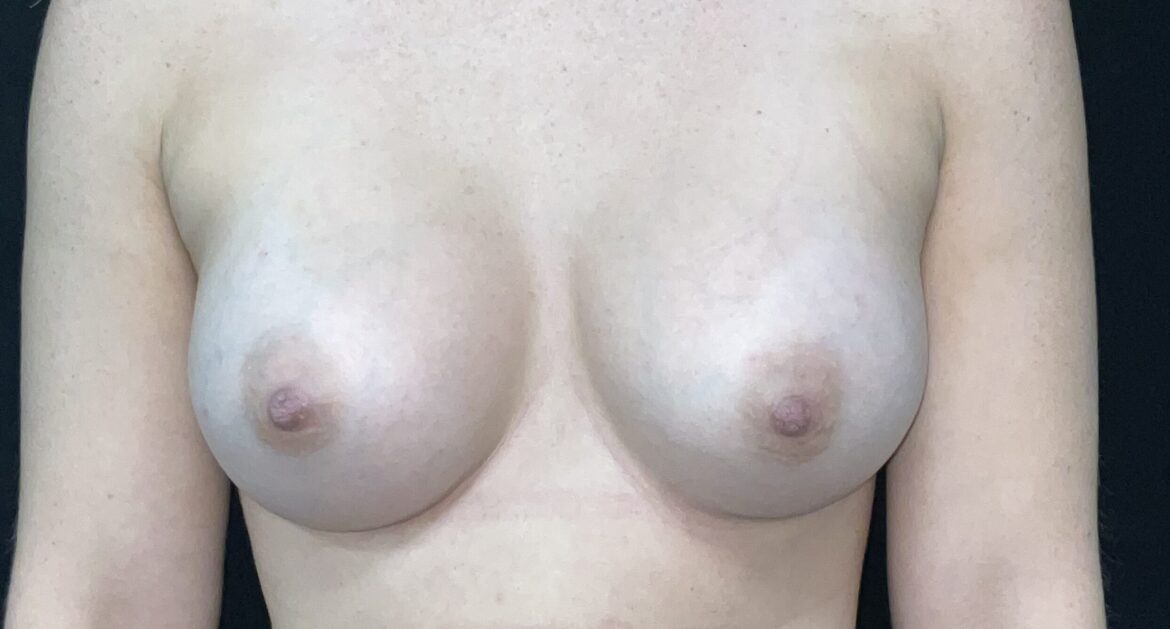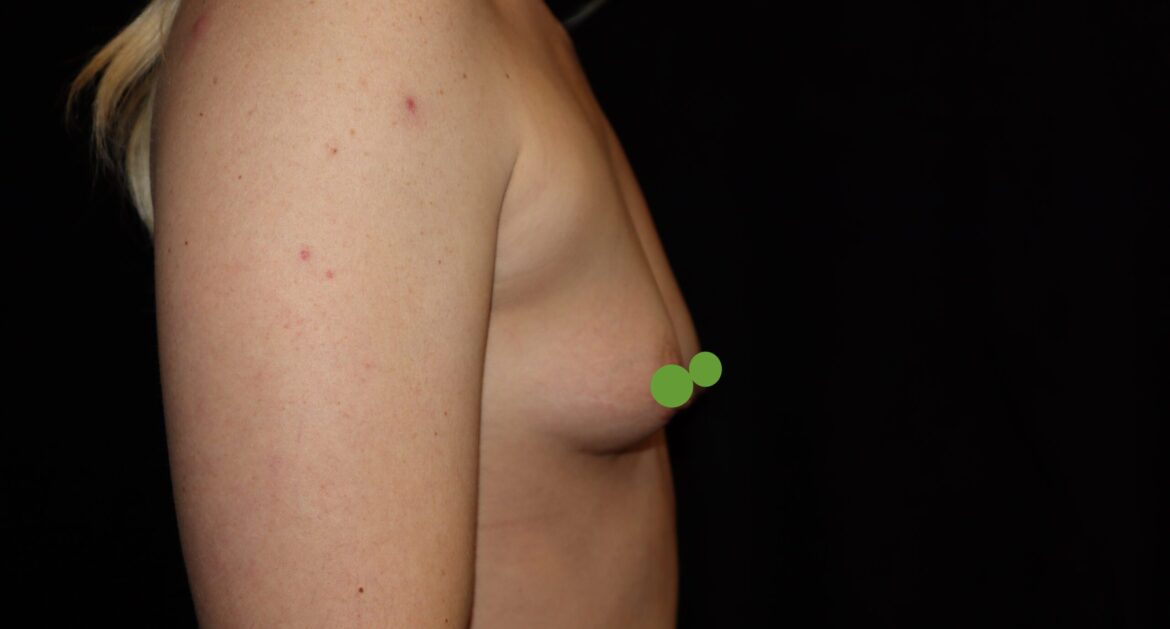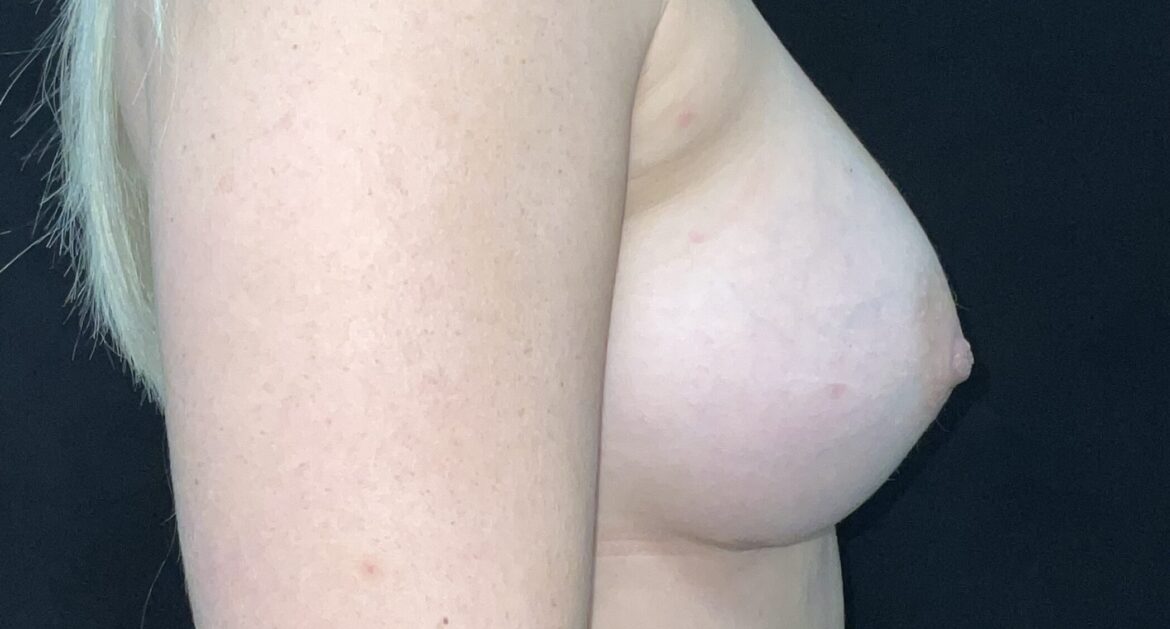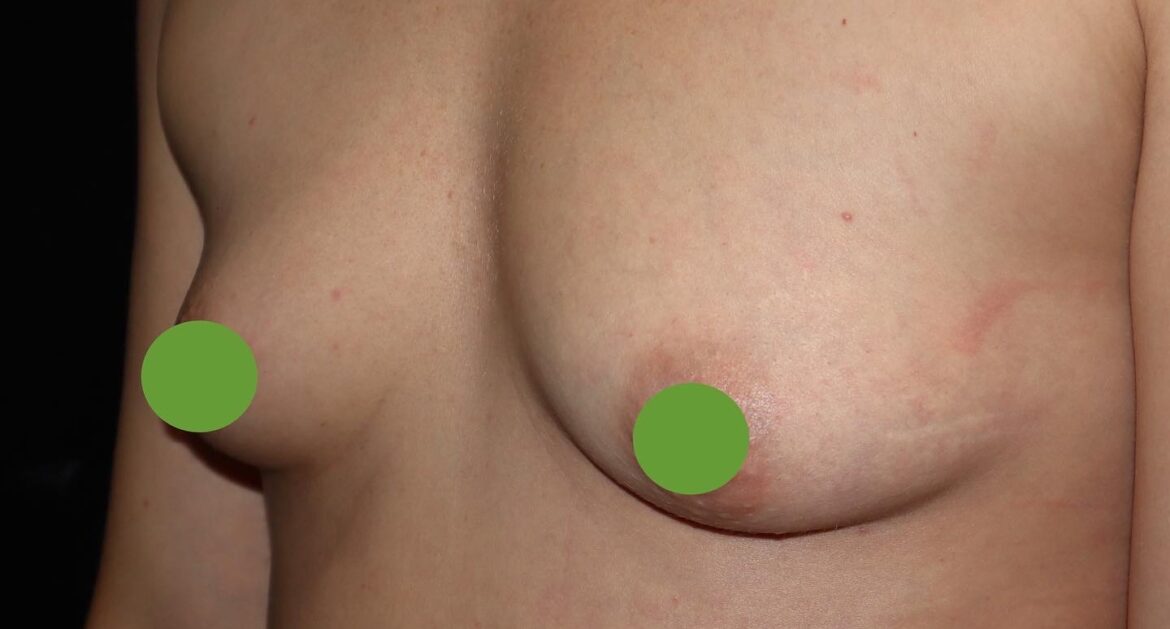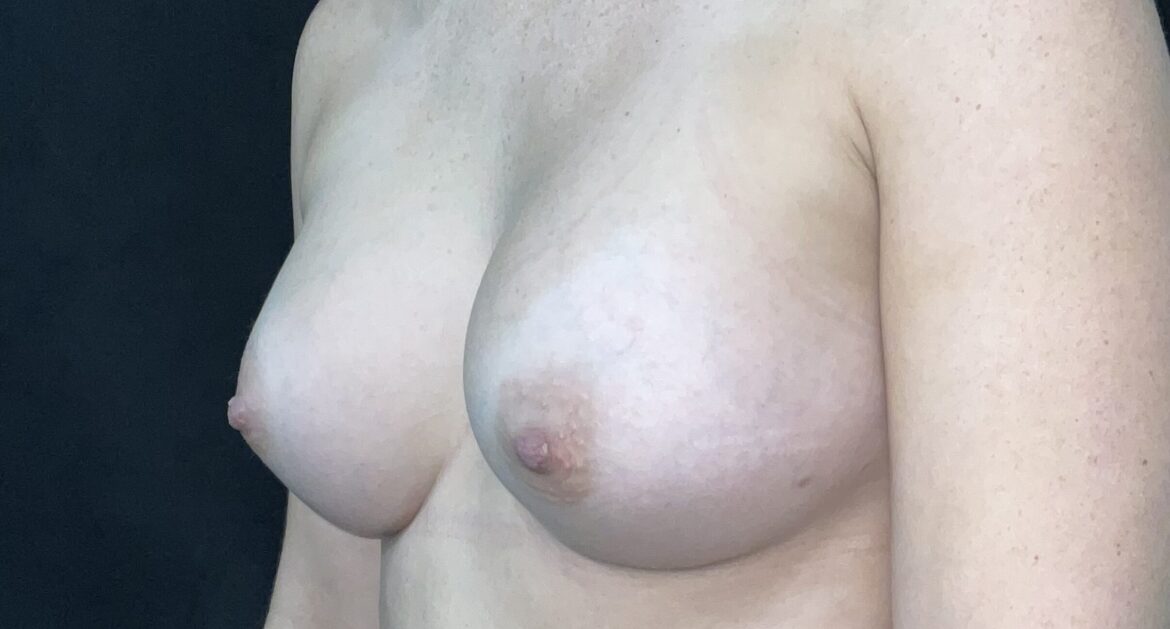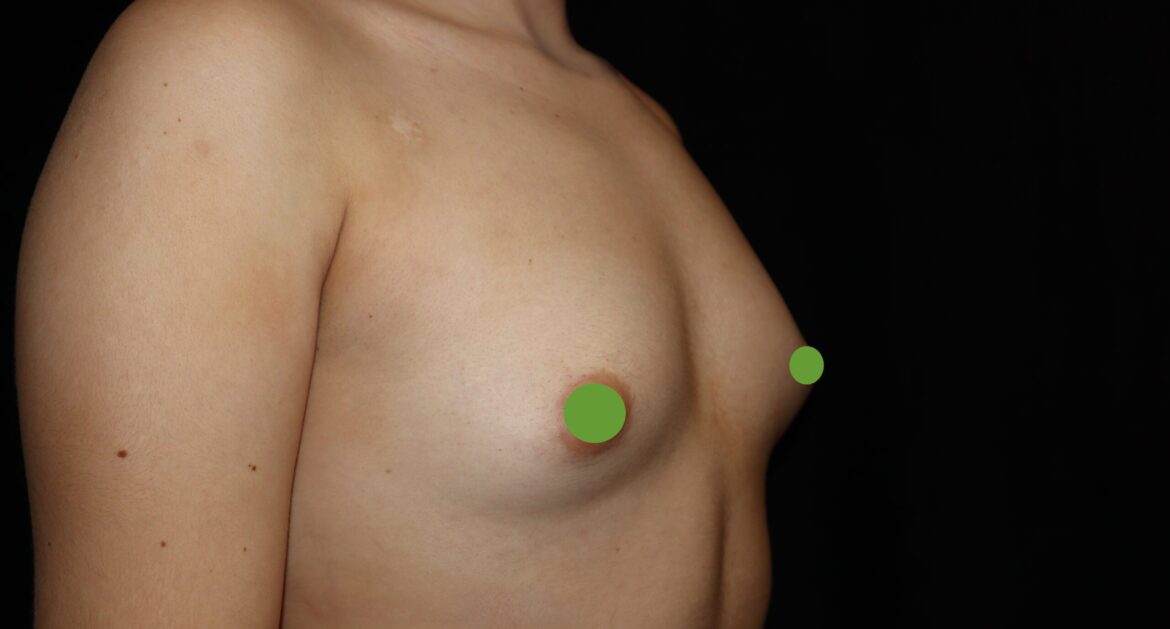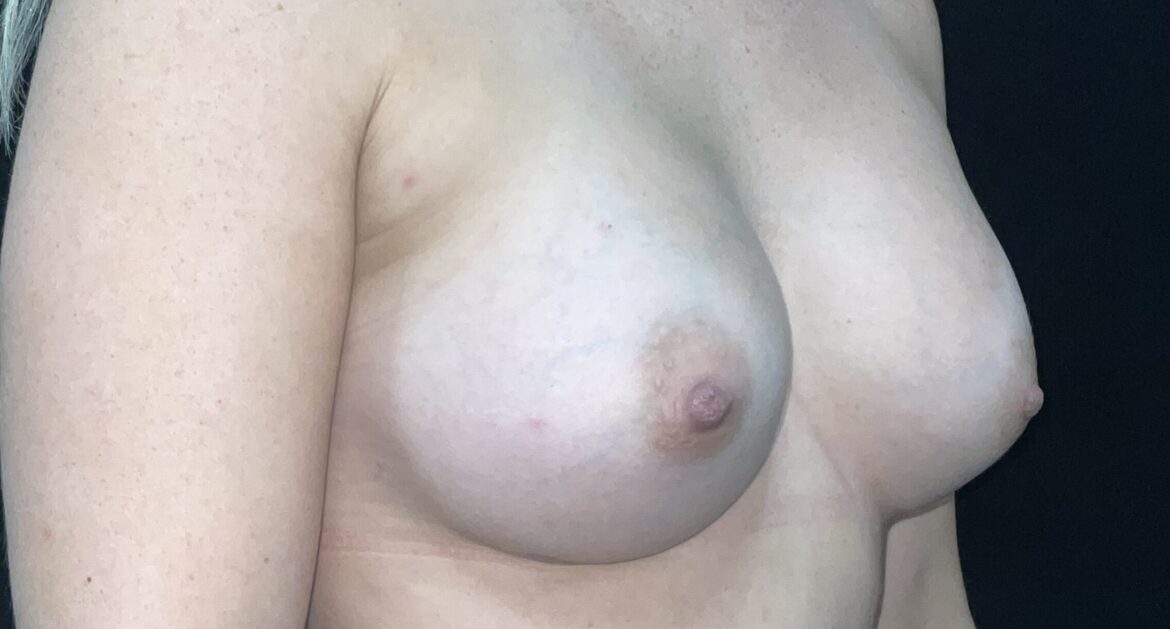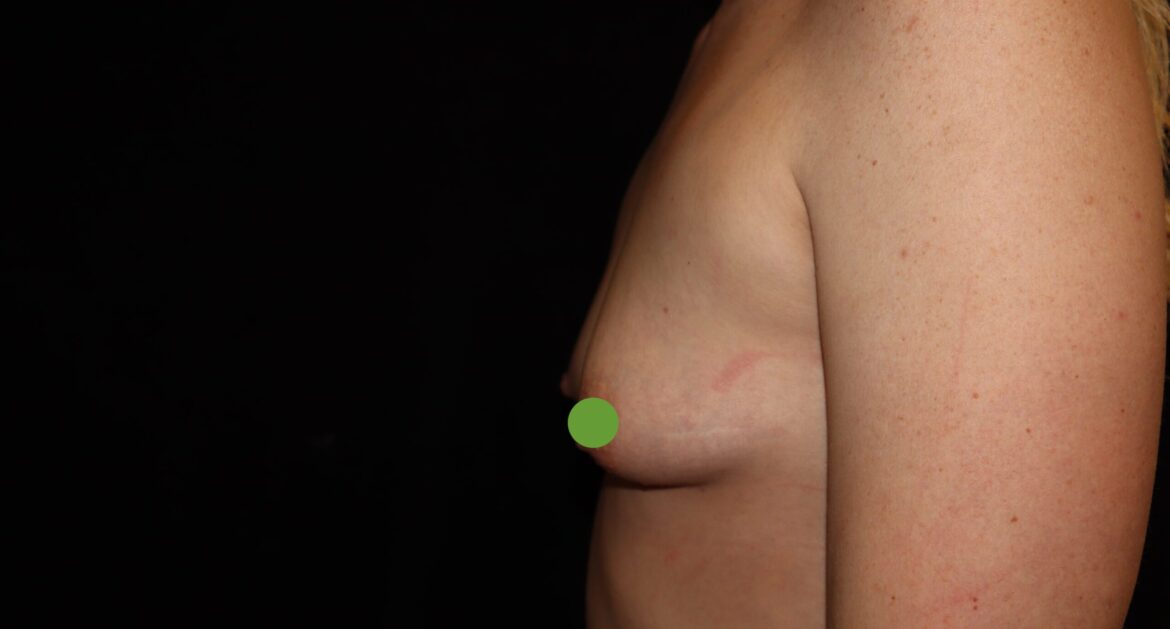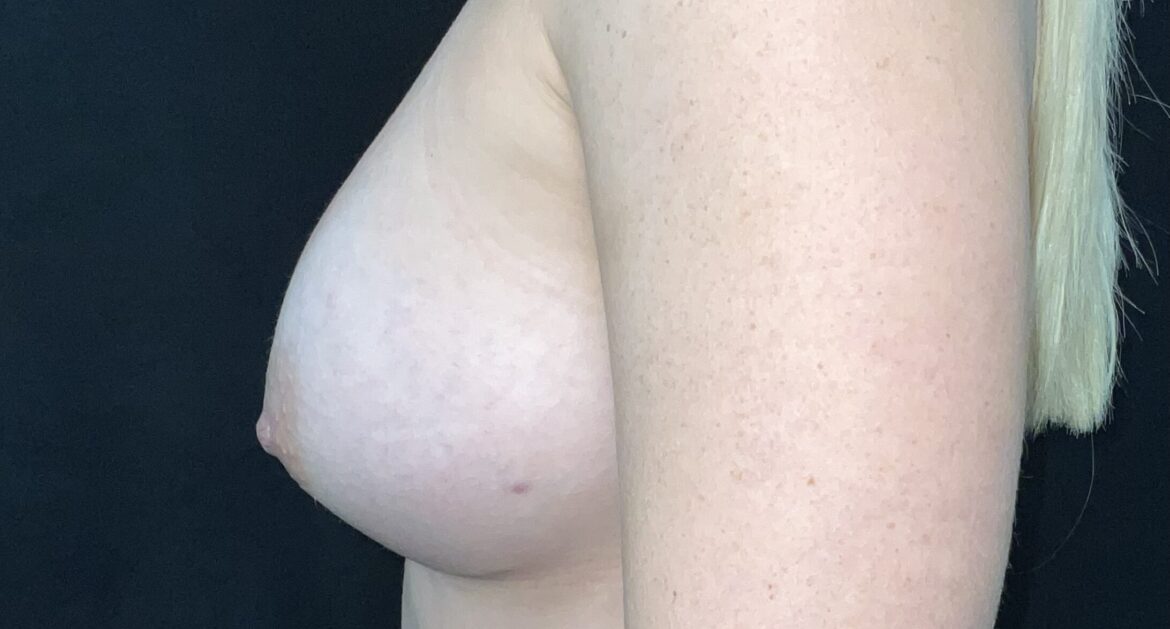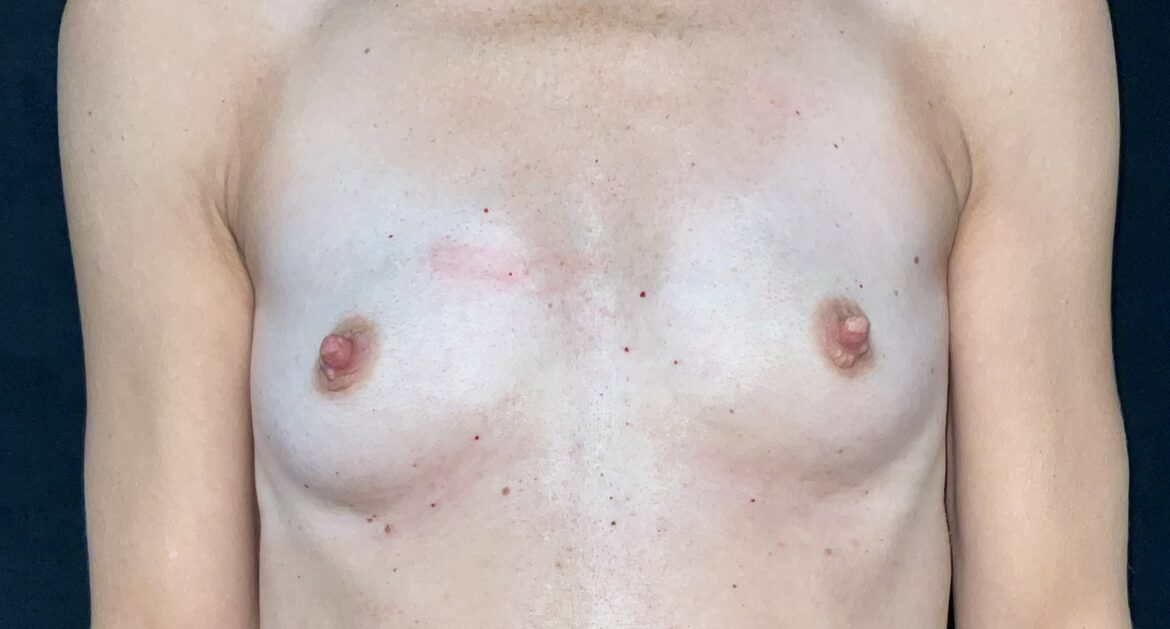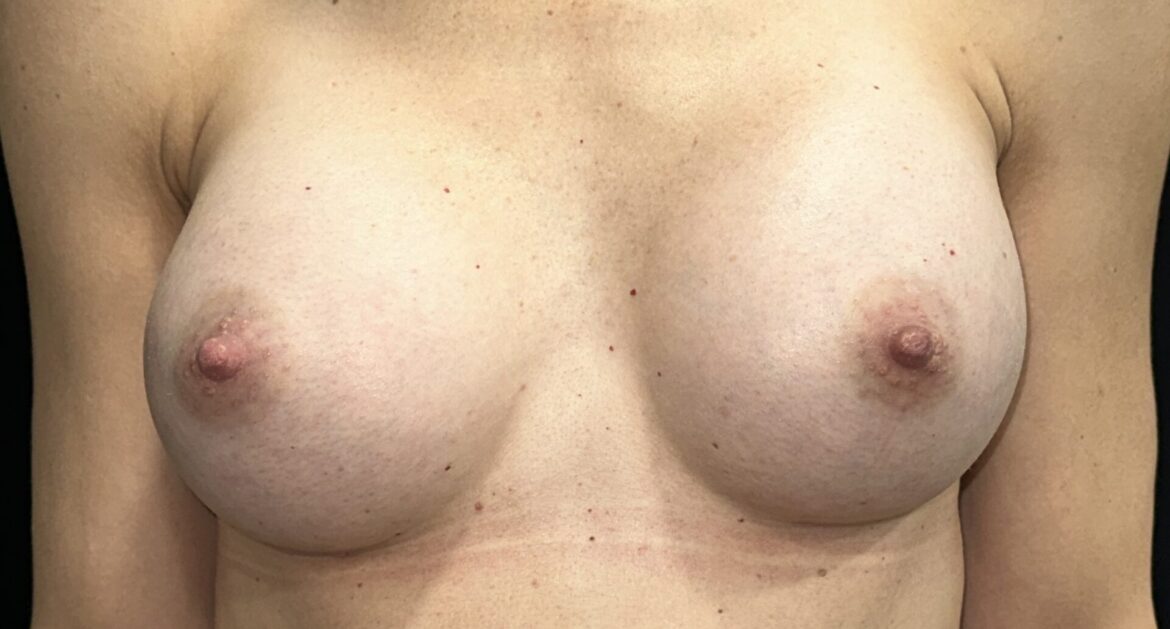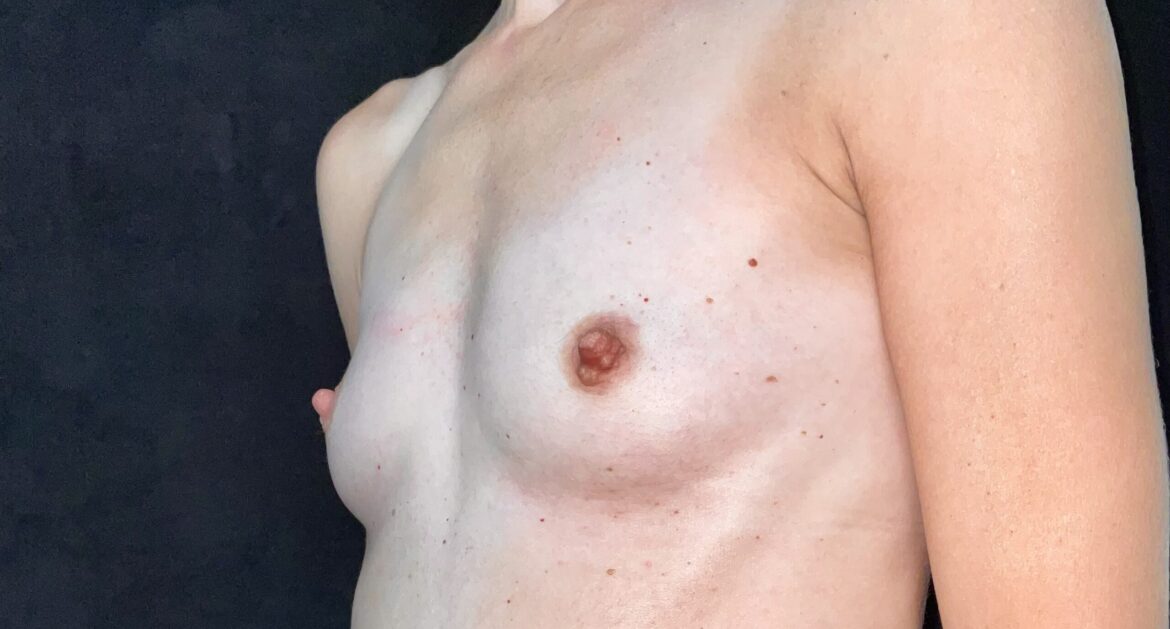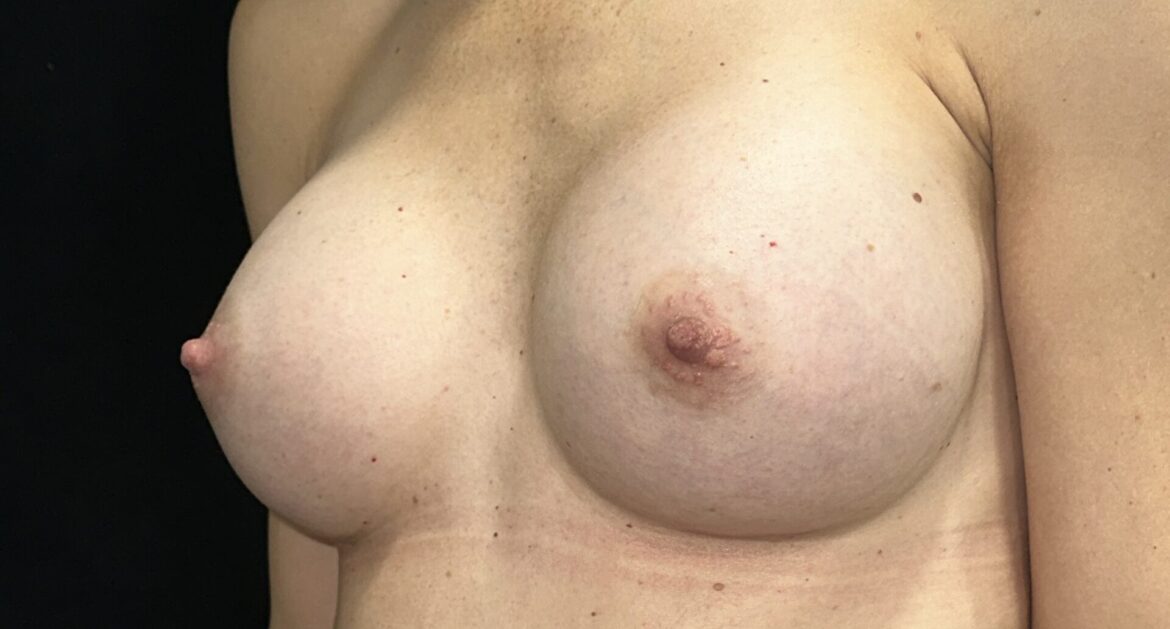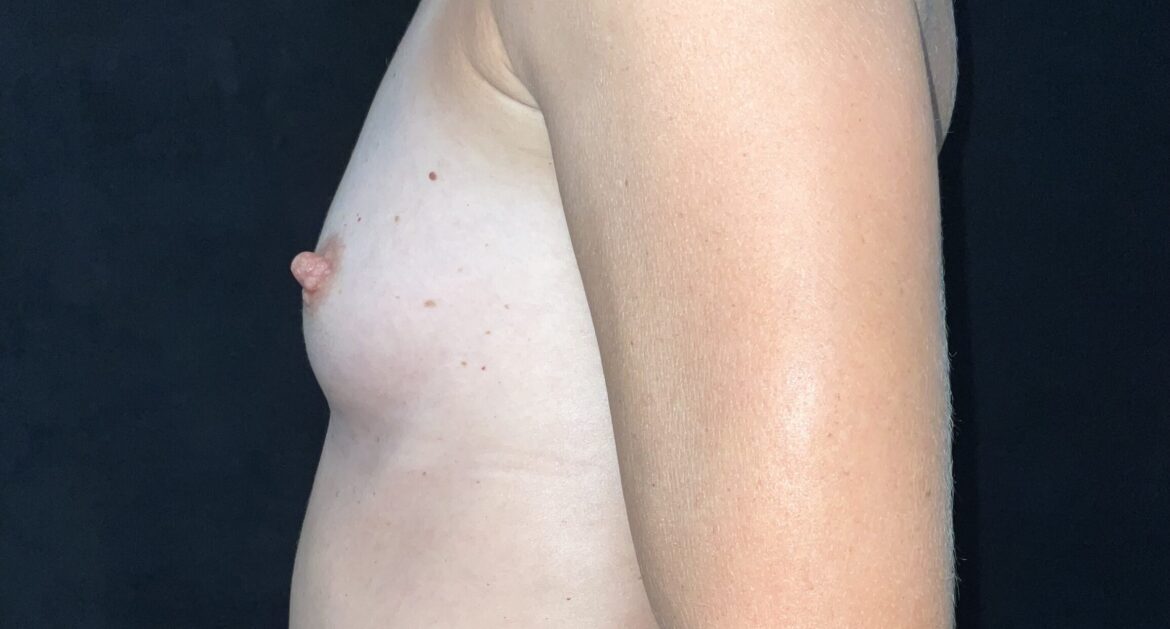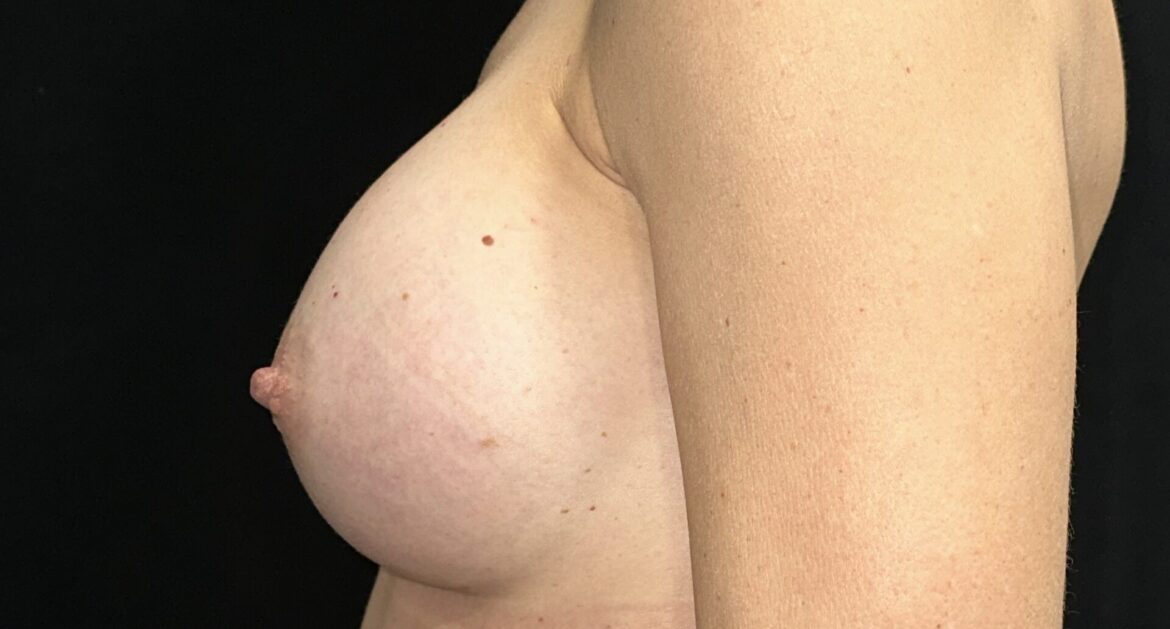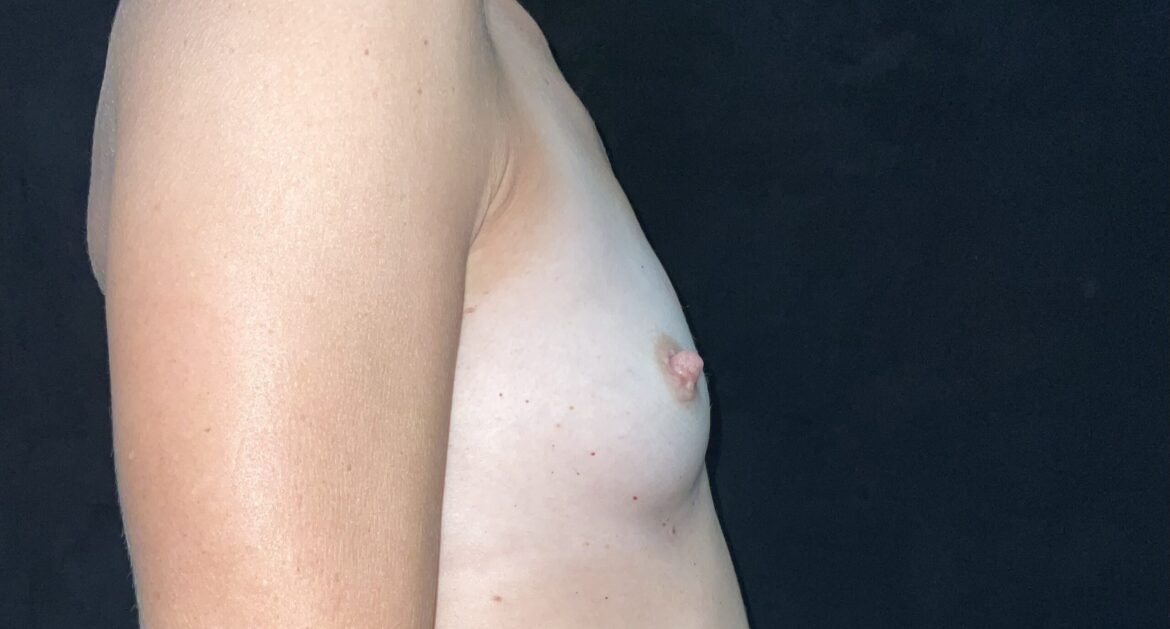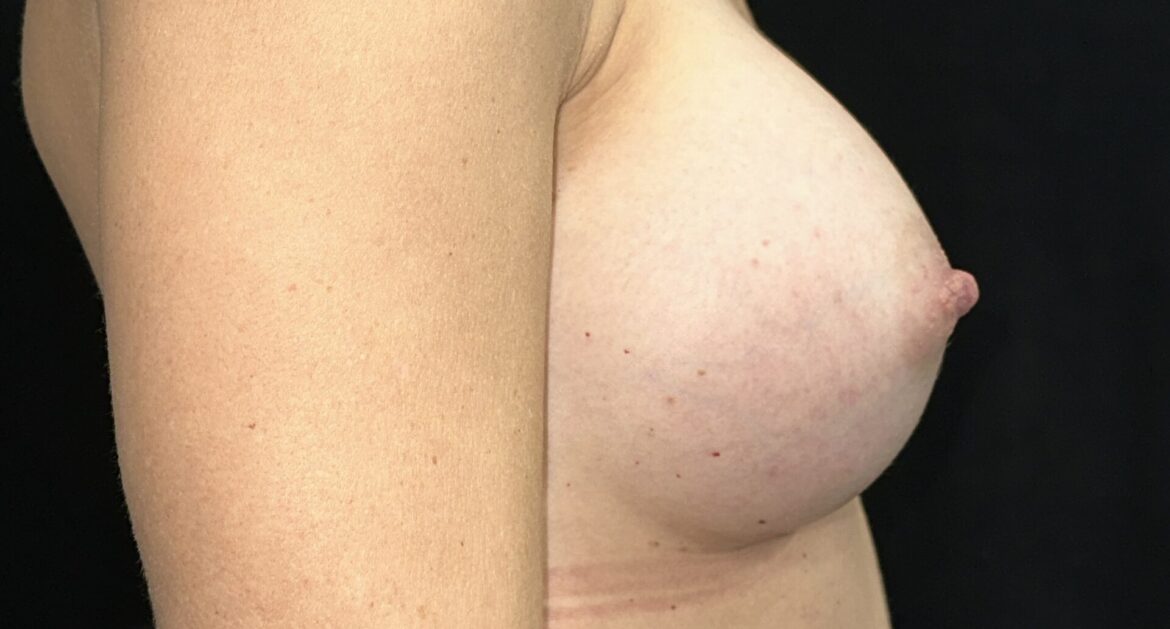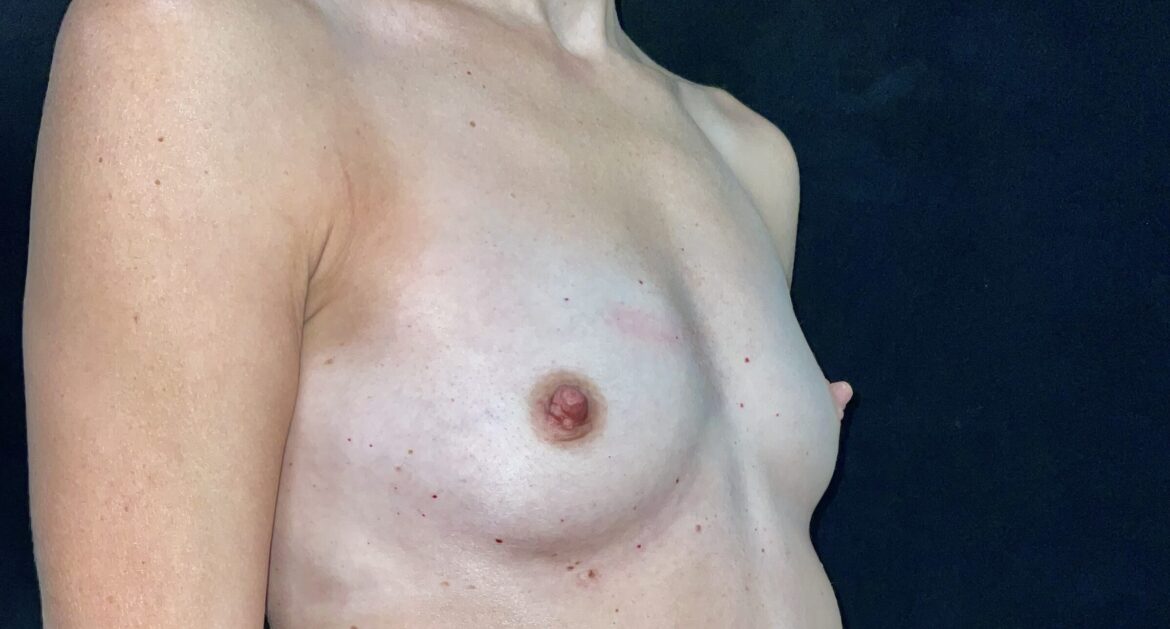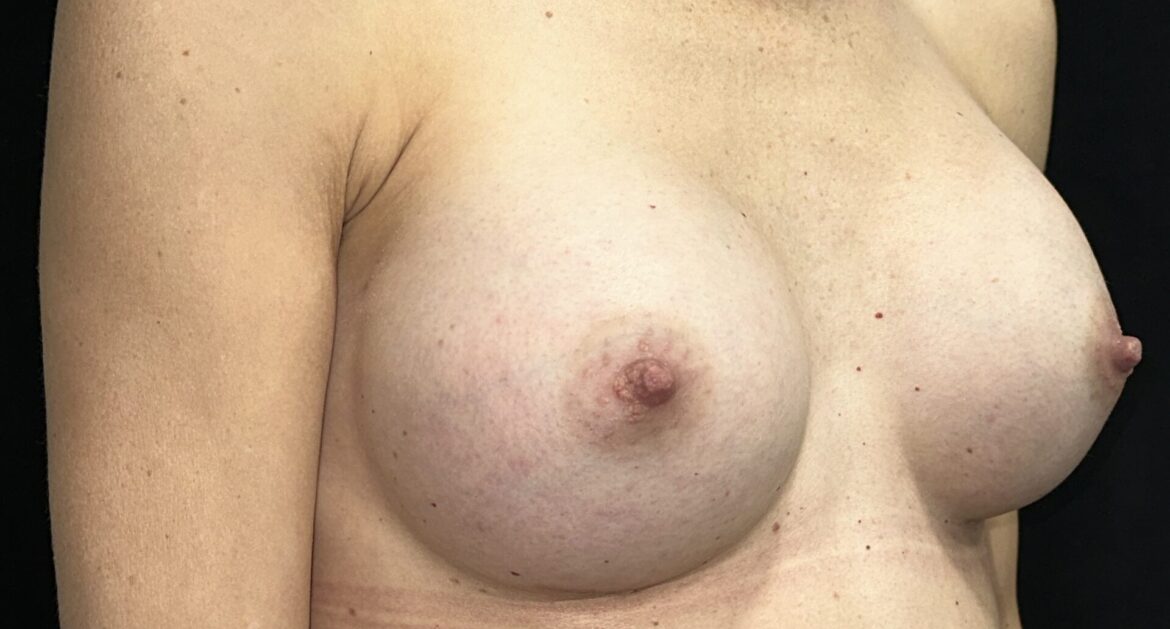Breast Augmentation
Breast augmentation, or augmentation mammaplasty, enhances your breasts using breast implants.
Dr. Marshall's Approach
Augmentation mammaplasty, also called breast augmentation or breast implant surgery, helps women who want fuller, larger breasts. Some women have naturally smaller breasts and would like more volume to improve self confidence or fit into their clothes better. Other women may have reduced volume in their breasts after pregnancy or weight loss. Breast implants can be used to help off-set these changes and restore the breasts to their "pre-baby" position on your body. In your one-hour consultation, board-certified plastic surgeon, Dr. Marshall, will explain the pros and cons between the different types and shapes of implants. He will also discuss placement of the implants, either above or below the pectoralis muscle. There are advantages and disadvantages to each, and Dr. Marshall will take to the time to go over each detail.
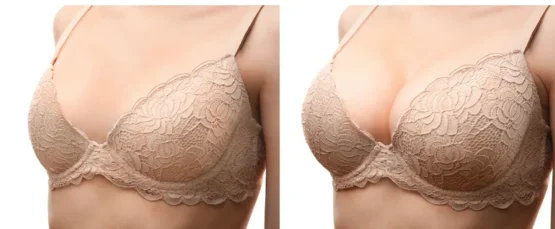
Breast augmentation before (left) and after (right)
Breast Implant Types
Saline Breast Implants
One of the first decisions to make during your consultation is whether you would like silicone or saline breast implants. Saline implants are round (as opposed to "shaped") and are filled with a sterile saline solution. If the implant were to break or rupture (extremely uncommon), your body naturally reabsorbs the saline, and your breast implant manufacturer's warranty would pay for the replacement and second surgery. Saline implants are also less expensive compared to silicone; in general, you will save about $1,000 when choosing saline. The disadvantages of saline breast implants involve the look and feel of the actual implants. Saline implants feel less natural compared to silicone. They also tend to ripple more along the edges, which is often visible thru the skin, especially over time.
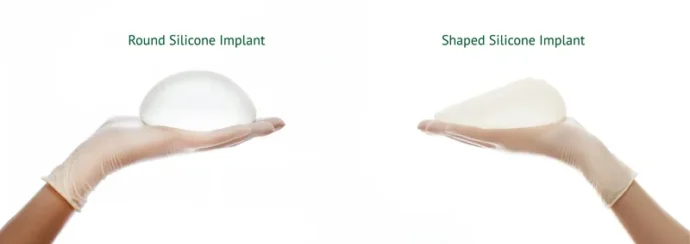
Round and shaped silicone implants for breast augmentation
Silicone Breast Implants
Silicone implants were re-approved by the FDA in 2006 for use in breast augmentation for women over 22 years old. They are filled with a soft, pliable silicone gel. The gel feels a bit more like natural breast tissue. If the implant leaks (even less common than saline leaking) the gel remains within the implant shell, and it does not travel to other parts of your body. Silicone does not ripple as much as saline and looks more natural under your skin over time. Silicone implants can either be smooth round, textured round, or textured shaped. The advantage of a textured, or rough surfaced, implant is that some studies have shown them to reduce the incidence of capsular contracture (see below) when compared to smooth surfaced implants. "Shaped" implants resemble the natural breast contour by having less fullness in the upper pole and more fullness in the lower poles, bottom of the implant. Some women feel that these shaped implants, while still offering an augmentation, help keep them looking more natural.
Breast Implant Placement
Another important consideration to discuss with Dr. Marshall is where the implants are going to be placed. The implants can be placed on-top of the pectoralis (chest) muscle, a "subglandular" location, or underneath it, the "submuscular" position.
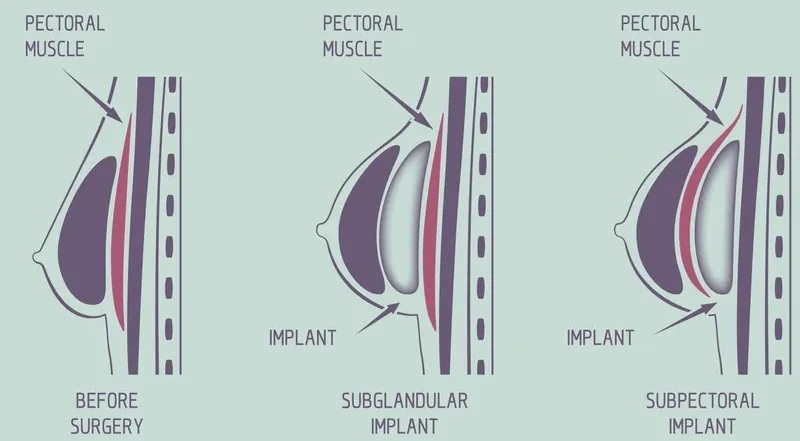
Subglandular and submuscular breast implants
Subglandular Implant Placement
Subglandular breast implants are placed on-top of the muscle and under the breast tissue. One of the advantages to this location is less pain after surgery and faster recovery. This means you'll be back to exercising 2-3 weeks sooner than if you have the implants placed under the muscle. Another advantage is that you avoid the possibility of developing what is called an "animation deformity" (see below video); this is visibly seeing the implants move under your muscle when those muscles are flexed. The main disadvantage of placing the implants in the subglandular position is the increase risk of capsular contracture, see below. Capsular contracture was extremely common in the 1980's as the majority of breast implants were place in the subglandular position. This lead to plastic surgeons in the 1990's to start placing the implants in the submuscular plane. Dr. Marshall still utilizes the subglandular plane, and he takes steps during your surgery to reduce the incidence of capsular contracture. He will also encourage you to perform "breast implant displacement" exercises 1-2 times per day after surgery.
Submuscular/Subpectoral Implant Placement
Submuscular breast implants are placed under the chest, pectoralis muscles. This procedure involves 1-2 weeks more downtime and is associated with greater pain immediately after surgery. The greatest advantage of placing the implants in the submuscular position is the reduction in capsular contracture. While there is still a risk of it developing, those risks are lower when compared to subglandular positioning of the implants. Submuscular placement of the implants also provide another layer of coverage for the implant under the skin. For lean women or women with thin skin and breast tissue, the muscle may help conceal the implant from being visible thru the skin. This is especially true in the upper, inner part of the breast, the cleavage line.
Under the Muscle Animation Deformity
When breast implants are placed under the muscle, the implants can be seen moving when the muscles are contracted. The video linked below demonstrates several different severities of this happening. Usually, the implants moving is mild and not too noticeable. However, it can be more severe, as in the second patient in this video. Animation deformities are never seen when implants are placed above the muscle.
This video is age restricted. Viewers must be signed in and at least 18 years old.
Breast Implant Incision Placement
There are three common locations to place incisions when performing a breast augmentation and breast implants.
Transaxillary Incision Placement
Transaxillary incisions are placed in your armpit, but using this approach prohibits the use of silicone implants; in other words, only saline implants can be placed using these incisions. Another disadvantage to this approach is the incision is visible when wearing certain dresses, tank-tops, and bathing suits.
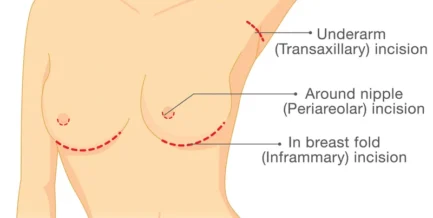
Breast augmentation incisions
Periareolar Incision Placement
Another possible incision location is around the areola, or periareolar. These incisions usually heal very well with minimal visibility. However, if there are any healing issues with the incision, they will be noticeable. Silicone or saline implants can be used thru this incision, however, the rates of capsular contracture are higher after using the periareolar incisions. Another downside to the incisions around areola is that sensory nerves can be cut that sometimes permanently decrease sensation to the nipples.
Inframammary Incision Placement
The last location is one that Dr. Marshall uses, the inframammary approach. This incision lies underneath the breast and is essentially invisible. It also has lower rates of capsular contracture compared to the periareolar approach. The incision also has minimal effect on nipple and areola sensation because there is no cutting around it. Lastly, this approach gives Dr. Marshall complete access to the plane for the implant (either above the muscle or below it) to ensure that you have no bleeding or complications.
Recovery After Breast Implant Surgery
Minimal Downtime
After your breast augmentation in Asheville, you will be monitored in a recovery area to make sure no problems occur. Most women go home a few hours after surgery, but you’ll need a driver from our office or surgery center.
Dr. Marshall will give you 1-2 days of narcotic pain medication to help control your discomfort. After 2-3 days, patients are usually taking Advil and/or Tylenol only. You will be allowed to shower and get your dressings wet 2 days after surgery. Swelling is common for 1-2 weeks after surgery.

Fast recovery from breast augmentation
Dr. Marshall will ask you to begin performing breast implant displacement exercises 2 weeks after surgery. By week 3-4, you can begin exercising with your arms. Dr. Marshall likes you ease into this, especially if your implants are under the muscle. Lower body exercising can begin as soon as you would like.
Also starting about 2 weeks after surgery, Dr. Marshall recommends our Silagen Silicone Scar tape on your incisions. Scar treatment packages offered by Reveal Aesthetic Surgery include the Silagen Silicone Scar tape with three CO2 laser treatments for optimal healing.
Dr. Marshall will give you a supportive bra to wear for the first 6 weeks after surgery. After 6 weeks, you may begin to wear the bra of your choice.
Breast Augmentation Risks
In surgery, there are always risks and complications. Breast augmentation complications are extremely rare. To minimize risks, patients should not smoke cigarettes, vape, and/or use nicotine. Eating healthy, exercising, and optimizing your nutrition with Vitamin C, Vitamin A, and Zinc sulfate are also essential to good healing.
The following are rare but can occur immediately following surgery:
- Bleeding
- Infection
- Incision separation ("dehiscence")
- Fluid collections
- Change to nipple sensation
Long-term, over months to years, the following are listed from most common to least common:
- Capsular Contracture
- Implant visibility or rippling
- Implant malposition, ie "bottoming out"
- Implant rupture
Capsular Contraction
Of these long-term possibilities, capsular contraction is worth discussing in more detail. The "capsule" is your body's scar that forms around your implant. This is a natural process and it happens in every breast augmentation patient. Over time, however, that scar, or capsule, can begin to squeeze ("contract") around the implant. There are 4 grades of contracture, with grade 1 being mild and not noticeable, and grade 4 being a deformed implant with pain. The exact cause of capsular contracture is unknown, but studies have shown the following help prevent it from occurring or decrease the severity:
- Submuscular placement of implants
- Antibiotic irrigation of implants
- Inframammary incisions
- Placing a protective barrier over the nipples/areolas during surgery
- Changing gloves prior to handling implants
- Only one person (the surgeon) touches the implants
Dr. Marshall utilizes all of these principles to minimize your risk of developing capsular contracture. In addition, Dr. Marshall will discuss starting a you on a new medication that has also been shown to decrease contracture, Singulair or montelukast sodium. This is a safe medicine that has been used for over 20 years to treat patients with asthma. It's taken once daily and has been shown to help prevent capsular contraction.
Anaplastic Large Cell Lymphoma
Please read the FDA's latest information on Breast Implant Associated ALCL. This relatively new, but extremely rare condition has been shown to be associated with textured implants made from certain companies. Dr. Marshall's textured implants from Mentor have not been found to be associated with ALCL.
Breast Augmentation Frequently Asked Questions
How much does breast implant surgery cost?
Prices can vary depending on the type of implant (saline vs silicone) and placement of the implant (submuscular placement requires general anesthesia), but the range is $5000-8000.00. This includes your surgery fee, anesthesia, operating room, your post-operative bra/compression, and all post-operative visits. Your consultation fee will also be deducted from this price.
Where are the surgeries performed?
Dr. Marshall performs surgery in his South Asheville, Biltmore Forest office, at the brand new, state-of-the-art Outpatient Surgery Center of Asheville (OSCA) and at Haywood Regional Medical Center in Clyde, NC.
Will I be totally "out" or "put under" during the surgery?
The short answer is, whichever you prefer. If implants are placed on top of the muscle, Dr. Marshall can perform these with local anesthetic, oral sedation (Valium or Xanax), and nitrous oxide (similar to what's given in dental offices). However, if you would prefer to be completely put to sleep, this can easily be offered at Pardee or Haywood Medical Center. If you are having implants placed under the muscle, these need to be done at the hospital.
Breast Augmentation Before and After Photos
Testimonials
I am over a month post op from my breast augmentation by Dr. Marshall.
I really cannot say enough about Dr. Marshall and his entire staff including Sonya his surgical nurse/manager. Starting at check in, they have all made me feel so comfortable at every step in the process... Read full Google review
- Megan G.
My experience with Dr. Marshall and his team has been an absolute pleasure! I went to 2 consultants with other top rated surgeons, before making the decision to have Dr. Marshall do my breast augmentation. And honestly, it was an easy decision after doing the research and speaking to him in person... Read full Google review
- Jess L.

